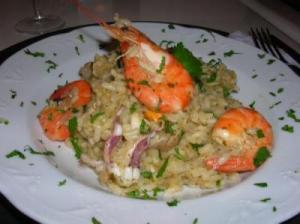Sparkling wine has been holding up the edges of supper since the first bubbles were quaffed in France in the times of Dom Perignon, the monk and legend behind what we now call champagne. A meal can start with an aperitif of prosecco, champagne or Franciacorta, typically followed by white and red wine of increasing structure and intensity, and finished by an effervescent tipple with dessert. It is the bookend but not the book, the bread but not the sandwich meat, the opening and closing titles but not the film itself.
Bubbly can be a Lone Ranger, served as a walking libation, for there are few things as satisfying as gliding through a room with a good glass of champagne whilst viewing art, chatting up new conquests, or just watching paint dry on a wall. One does not serve red wine at a function of this sort, as it lacks in gaiety and spriteliness. One never questions what will happen about a few glasses of red wine. Sparkling wine, on the other hand, has spontaneous and rather sensual possibilities tucked up its sleeve.
Why not insert this ceremony, romance and sheer lightness of being, into the main course itself, letting bubbly take its due at centre stage?
Inspired and thirsty, I started with what I had in the kitchen – a bottle of Prosecco 52 Brut Valdobbiadene D.O.C. from Santa Margherita and some carnaroli rice, one of the best grains for risotto. It is far more common in England to use arborio rice for risotto, likely because it is easier to find, yet carnaroli has a slower cooking time and higher starch content, allowing the rice to absorb more liquid and remain softer and smoother.
A bit of information about the Prosecco in question …
Prosecco 52 Brut Valdobbiadene D.O.C. is a sublime expression of Santa Margherita’s enological prowess. The number 52 has a double meaning, as it refers to the first year that the winery made prosecco in 1952, before the D.O.C. was recognized by the Italian government, as well as number of the best parcels of prosecco grapes selected to make this particular cuvee.
The result is a fresh, young wine dressed in a brilliant straw yellow vest with light green highlights. On the nose it is quite floral and delicately fruity, with notes of acacia, green apple and pineapple. On the palate, the acidity is balanced by a lovely softness and elegance. The bubbly perlage is persistent, and certainly a vehicle for aromatic intensity as well as minerality.
With risotto in mind, I had the task of finding something suitable to pair with this fine example of Prosecco Valdobbiadene. Most risotto recipes are too heavy to be paired with Italy’s most famous sparkling export. The rice dish comes from the mountaneous north, where winters are long and the traditional cuisine emphasizes fatty meats and warming sauces. We have the south to thank, in the form of seafood risotto, a ruling dish from Rome down to Sicily, its coastal towns brimming with excellent shellfish.
In London, thankfully there is Waitrose for the procurement of shellfish. For those not living next to a fresh fish market (that makes 95% of us), they are fully stocked with all the mussels, clams, squid and prawns you will need for this dish. I would recommend that one resist the temptation to cheat and buy cooked shrimp. They do a great job of advertising it at the seafood counter, and you can choose it shelled or whole, but there is a lot to be said for buying it fresh.
The variety in a seafood risotto pairs well with this Prosecco, as does the rice itself. Its prawns bring out the delicate sweetness of the Brut, for example. Even though this wine appears rather dry on the palate, as do most Bruts, the category allows for up to fifteen grams of sugar per liter. The mussels bring a briny minerality balanced by the prosecco’s softness. As for the carnaroli rice, its starchiness is cut by an appley, acidic bite, bringing harmony to the dish.
